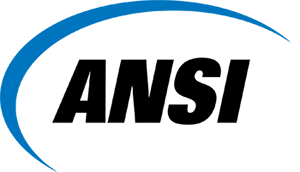Knowing that “safety first” is top of mind for plastics manufacturers, Plastics Business recently spoke with two injection molding machine, extrusion machine and auxiliary machine manufacturing veterans from Cincinnati, Ohio-based Milacron about some of the basics of machine, robotics and auxiliary guarding.
Larry Keller, director of engineering, Milacron, and a member of the safety standards committee for the Plastics Industry Association, was kind enough to share some of his insights about safety and standards, as well as a quick look at machine guarding for injection molding machines. Ron Gulbransen, who oversees Milacron’s auxiliary equipment offerings, highlighted some of the safety issues and guarding methods that are specific to robotics and mold change tables.
Keller explained that the American National Standards Institute (ANSI), established in 1918, is a private nonprofit organization that oversees the development of voluntary consensus standards for systems in the United States, and that its standards are commonly used by OEM suppliers like Milacron while designing machines.
“ANSI standards are sponsored by a plastics group; they sponsor the writing of standards whether it be injection molding, blow molding or extrusion,” Keller said. “For machine design, there is a type A standard, a type B standard and a type C standard.”
The type A standard is very broad; it covers basic concepts, principles and aspects. Type B standards apply to safety aspects or safeguards for a range of machinery. Type C standards zero in on safety topics for a particular machine or a group of machines.
Machine design, which includes safety hazard risk assessments and then elimination of as many risks as feasible, is the first method of minimizing risk.
“Other methods,” said Keller, “include adding guards and safety devices for the machines when they are installed at the plant.” When machines are designed, the makers identify the various zones in which safety hazard risks exist. For those zones, risk analysis is performed and effective risk mitigation – such as guarding – is identified. “The most dangerous zone in an injection molding machine,” Keller said, “is the area where the two platens come together; it’s possible for injury or death from crushing to occur on a large machine.” Machine guarding standards describe devices that can be used to prevent safety risks, and include details regarding, for example, the height and placement of barriers.
Processors must be aware of all the hazards on a machine and install recommended safety equipment like barriers and e-stop buttons. Keller stressed that plastics processors must also make their operators thoroughly aware of the risks, conduct safety training and establish procedures to minimize risks, and provide the necessary PPE for each kind of risk.
Gulbransen explained that, with robotics, there are multiple possible safety hazards to identify and against which to guard. The safety issues, said Gulbransen, “can include things like mounting hole hazards, power and/or grounding requirements, and the location of e-stop devices in relation to the system controller.” A robot’s testing and start-up procedures might create safety hazards and, of course, a robot’s mobility and the span of its reach must be evaluated for proper guarding.
“Robotics guarding cells, said Gulbransen, “come in two common styles: non-operator side guarding cells and operator-side cells.”
Non-operator side cells typically have a top-loading robot that will pull the parts out and traverse outside of the press, with guarding consisting of an A, B and C side, with the open side pushed up against the molding machine.
“On an operator side guarding cell with a robot that reaches overhead,” Gulbransen explained, “the operator has to be able to access the machine control to make changes to the machine during the process. The biggest difference, compared to a non-operator side cell, is that an overhead panel typically must be installed to protect the operator as the robot traverses over top of the area.”
An operator side guarding panel cell typically is a four-sided cell – with A, B, C and D sides – which must enclose the area so that the operator can only enter the guarding cell through the access door which is interlocked to the stop keys to stop the robot and the machine.
Gulbransen explained that, for a mold changing table, fencing, access ladders, e-stop buttons and safe surfaces are important safety issues. “A mold changing table can be a dangerous piece of equipment if not guarded correctly,” he said, “because it is a very heavy piece of rolling steel that has to be placed in a precise location.” It must be guarded around the entire perimeter, and its platform and powered rollers are additional safety hazard risks. Mold changing tables typically require anchored safety fencing that is built to accommodate the height of access ladders, multiple e-stop buttons, a safety switch monitor and slip-resistant surfaces.
Many thanks to Keller and Gulbransen for sharing some of their insight into machine, robotics and auxiliary guarding. Their work helps keep safety first.





